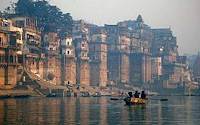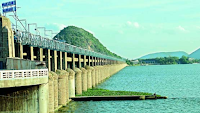- Home-icon
- Group - I
- _Tamil medium
- _English meduim
- Current Affairs
- _ Current affairs in Tamil
- _ Current affairs in English
- General Knowledge
- E-Books
- _ Self Development
- _Life Style
- _psychology
- Previous Years Questions
- _TNPSC Previous Year overall questions
- _TNPSC Group 2
- _Tneb Tangedco
- _TN Forest Guard
- Job Vacancies
- Science
Length of some important Rivers in India
April 10, 2021
S.no Name Lenth(KM)
The Indus River provides key water resources for Pakistan's economy – especially the breadbasket of Punjab province, which accounts for most of the nation's agricultural production, and Sindh. The word Punjab means "land of five rivers" and the five rivers are Jhelum, Chenab, Ravi, Beas and Sutlej, all of which finally flow into the Indus. The Indus also supports many heavy industries and provides the main supply of potable water in Pakistan.
Brahmaputra first flows through the northern region of the state of Arunachal Pradesh. The river flows within the state for about 22 miles before it is joined by two of its major tributaries, the Lohit River and the Dibang River. After joining the Lohit River, it is known as the Brahmaputra. The river crosses through territory of the indigenous Bodo tribe, who refer to the river as Burlung-Buthur. After flowing through Arunachal Pradesh, the river enters the Indian state of Assam, where its width increases to nearly 12 miles in some areas. The river later separates into two distinct streams, the Brahmaputra channel in the south and the Kherkutia channel in the north. The rivers split and subsequently join together again about 62 miles downstream, resulting in the formation of the world's largest river island, named Majuli.
Godavari River rises in northwestern Maharashtra state in the Western Ghats range, only about 50 miles (80 km) from the Arabian Sea, and flows for most of its course generally eastward across the broad plateau of the Deccan (peninsular India). After traversing central Maharashtra it enters northern Telangana state northwest of Nizamabad and continues through a broad valley and forms a short stretch of Telangana’s northeastern border with Maharashtra.
Narmada flows more than 1,000 km of its total 1,300-km length through a densely forested basin in Madhya Pradesh before draining into the Arabian Sea. It is the lifeline of the state, providing food, water and livelihood to more than 25 million people and habitat to a variety of plant and wildlife species. Like many of India’s rivers, the Narmada too is struggling against the pressures of development such as nutrient run-off from agriculture, degradation of its riparian zones, over-extraction of water, construction of dams and pollution from sewage discharge and solid waste dumping.
The River Krishna forms border between the states of Telangana and Andhra Pradesh from Srisailam to Pulichintala for about 290 kms flows passing through NSP Dam and It flows through the state of Karnataka before entering Telangana State in Mahabubnagar and flows through Nalgonda.
It is a major source of irrigation for Maharashtra, Karnataka, Telangana and Andhra Pradesh. The delta of this river is one of the most fertile regions in India and was the home to ancient Satavahana and Ikshvaku Sun Dynasty kings.
The Mahanadi is a major river in East Central India. It drains an area of around 141,600 square kilometres (54,700 sq mi) and has a total course of 858 kilometres (533 mi) Mahanadi is also known for the Hirakud Dam. The river flows through the states of Chhattisgarh and Odisha.
It is one of the most-active silt-depositing streams in the Indian subcontinent. Its upper course runs north as an insignificant stream, draining the eastern Chhattisgarh Plain. After receiving the Seonath River, below Baloda Bazar, it turns east and enters Odisha state, its flow augmented by the drainage of hills to the north and south.
The Kaveri, also spelt as Cauvery in its anglicized form, is an ancient river that arises from a gurgling spring at Brahmagiri hills in Kodagu district in Karnataka. This highly-revered river flows through Karnataka, Tamil Nadu and the Union Territory of Puducherry. By virtue of numerous interesting legends attached to this river, it is worshipped in certain areas that it flows through. There is even a large temple built at Talakaveri in Kodagu district from where the river arises and is worshipped as Goddess Kaveri. It is considered as the holiest river in southern India and is sometimes referred to as the ‘Ganges of the South’.
Telegram updates
Jobs by category
தமிழ் - ஆங்கிலம்
கடற்படைத் தலைமையகம் → admiralty செல்வாக்கு வளர்த்துக் கொள்ளுதல் → aggrandisement கடற்படைத் தலைவர் → admiral வரம்பற்ற ஆட்சி → absolutism
Most Popular

Arihant - General Knowledge 2021(593 pages)
August 10, 2021

RRB NTPC Syllabus 2021 - Check out Exam pattern
August 04, 2021

ALL YOU NEED TO KNOW ABOUT CIVIL SERVICE EXAMS
December 29, 2021
Popular Posts

ALL YOU NEED TO KNOW ABOUT CIVIL SERVICE EXAMS
December 29, 2021

How to outstand others with a strong personality?
May 29, 2021

Top 10 tips to improve your productivity in life
June 02, 2021

How to increase IQ?| yes its Possible!
April 08, 2021

How To Get Rid Of Stress And Depression
June 04, 2021
study materials
Suggest topics!
learn languages
Telegram Updates
Suggest topics!
Popular Posts

IAS Salary - Grade-wise Pay Scale, Allowances & Other Benefits
December 24, 2020

Chandrayaan-3 - Everyone Need to Know!
September 13, 2023
Menu Footer Widget
Tamilreader |Copyright © 2025 Tamildigit

















0 Comments